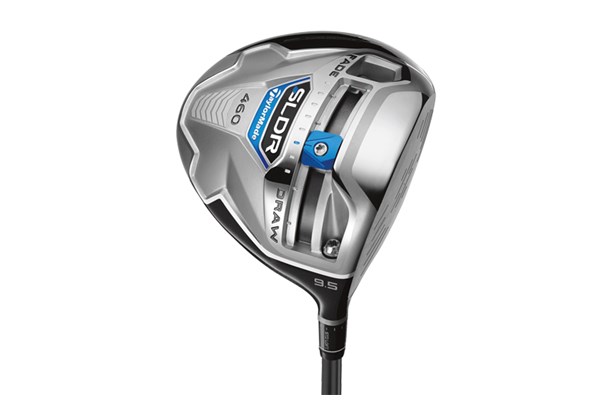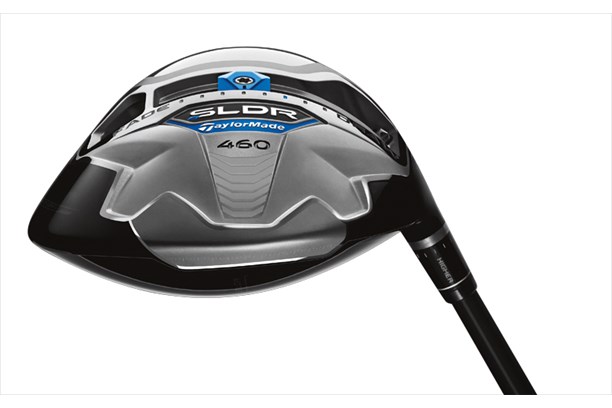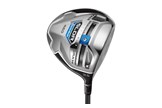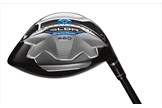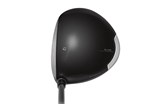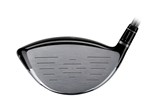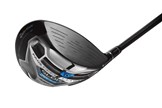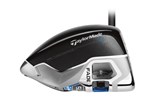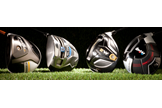TaylorMade SLDR driver Review
Last updated:
-
At a glance
- TG Rating
- Owner Rating
-
Pros
The adjustability is simple and it does work. Most will experience an increase in ball speed and reduced spin, leading to longer drives. Three lofts plus the adjustability gives 6.5° to 13.5° range.
-
Cons
The glossy grey crown is a bit dull – a big move away from the lairy crown designs of the R1 and RBZ Stage 2. There’s no face angle adjustment, meaning some will have to manipulate the face at address to suit their swing. Setting the slider to one extreme limits flight to one shape.
What we say...
2013 FIRST HIT TEST
TaylorMade’s SLDR has had a fast take-up on both the main tours. The company claims this is the best golf driver they’ve produced, so we were keen to see what all the fuss was about. We hit both the SLDR and its predecessor, the R1 Black, on our GC2 launch monitor on the range at Stoke Park Golf Club. Here’s what we discovered…
Technology
TaylorMade responded to feedback on the R1 and attempted to make the adjustability simpler. They’ve certainly delivered on this – it took me seconds to unscrew the weight in the sliding mechanism, move it to my chosen position, and tighten it back up, hearing a reassuring “click”. It really works, too. I wouldn’t say I got the full 30 yards of claimed dispersion from one extreme to the other, but draws were easier to come by and fades more difficult to achieve on the draw setting, and vice versa. Even moving the weight a couple of slots either side of neutral had a noticeable effect on the flight.
Performance
The launch monitor doesn’t lie. I experienced marginally higher launch, faster ball speeds (2mph more) and lower spin numbers than with the R1. So the SLDR lives up to its billing. Average carry was up as a result, from 268 to 274 yards. Shifting the slider three clicks towards fade reduced my tendency to over-draw the ball. By sliding the weight a few more clicks towards fade I was actually able to shape the ball both ways, something I struggle to achieve with conventional drivers.
Looks
TaylorMade stand by its white technology, but the SLDR is a big move back towards a traditional colour scheme. The charcoal grey crown is glossy, but not overly reflective, and contrasts well enough with the silver face to have a similar effect to the white R1 to aid alignment. I don’t like the lighter section on the back of the crown; it doesn’t serve a purpose and isn’t as dashing as the R1 graphics. It also looks compact from the top – more like a 440cc head than a 460cc.
Feel
For a driver all about distance, the feel wasn’t as hard as I expected. The ball seemed to stay on the face and then jump off quickly. The swing weight didn’t feel as heavy as the R1 and it felt like my effort was being rewarded with extra yards. The SLDR head is the same weight as that of the R1, but the SLDR does feel lighter. The weight in all the heads of modern drivers comes mainly from the adjustability. With the SLDR, the adjustability, and therefore the weight, is exactly where they want it – low and close to the face for optimum launch.
Flight
While the launch monitor told me I was launching the ball on a slightly steeper angle, I wouldn’t say the peak height was any different to the R1, perhaps due to the lower spin I was getting. In fact, by increasing the loft 0.5º I was able to get a bit more distance due to the reduced spin.
Sound
The R1 had the big plate towards the rear of the sole that adjusted the face angle and gave it a high-pitched sound at impact. The SLDR doesn’t have this and, consequently, the sound is less offensive. It’s powerful and explosive, but still quite high-pitched.
Forgiveness
More than enough. The adjustability itself is one way golfers can negate their bad shots, but strikes away from the sweetspot also made little difference to the flight or carry.
Looking to buy a TaylorMade SLDR driver?
The right driver can make all the difference to your game! Check out our best golf drivers buying guide to help you find the perfect club.
Ready to buy now? Here are some of the best places to look for deals on TaylorMade SLDR driver
UK Deals
- View deals on eBay
- View deals on Golfbidder
US Deals
- View deals on eBay
- View deals on Global Golf
Old vs New Drivers Review: M4 vs M2 vs SLDR vs RBZ Stage 2
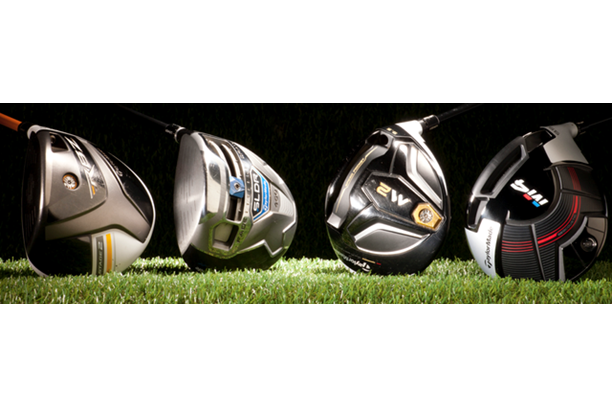
TaylorMade’s new SLDR driver is replacing the R1 as the top club in the company’s range. It has a 20g weight on the sole, which slides inside a rail that goes from the heel area to the toe – giving golfers the ability to create 30 yards of shot shape adjustment.
It’s an attempt to simplify movable weight technology, after research suggested many drivers are too complicated for some potential buyers. In other TaylorMade drivers, such as the recent R1, the R11S and the R9, screwing the heavier of two weight plugs into a port in the toe created fade bias; moving the heavier of two plugs into a port in the heel created a draw bias. But the SLDR has much more than a new weight system – a low and forward centre of gravity is said to promote a higher launch, faster ball speeds and low spin for increased distance. Additional distance is supported by a larger clubface than the R1, with more of the clubface and sweetspot above the CG for added forgiveness.
The movable weight is blue and matches the SLDR logo, but the clubhead is charcoal grey and sports a more traditional look, and it’s a move away from white from the company that revolutionised driver colours.
Details: Available in 9.5˚, 10.5˚ and 12˚.
RRP: £349 with Fujikura Speeder 57 shaft. A TP version with a Fujikura Motore Speeder TS 6.3 shaft is £399.
Website: www.taylormadegolf.eu
Your Reviews
Taylormade Drivers User Reviews
-
Great club when hit out of the sweetspot.
Upgraded from the RBZ driver, it's a long powerful driver when hit out of the Middle.the only downside to it is if you strike it badly it's not the most forgiving and distance suffers.
-
Amazing club
This time last year I bought a Taylor made rocketballz II driver. I really liked the club but I struggled to consistently hit the ball straight. In November, out of curiosity, I tried an SLDR on a flight scope & it was fitted for me. I was so amazed I bought it. I now hit virtually every drive straight down the middle, it feels great & I feel confident each time I stand over the ball. This also has given me considerably more distance. My handicap is 31 but I'm sure with the help of this driver I can get much lower this season. I would definitely recommend anyone who struggles to drive straight to have a proper fitting & give this club a try.
